Read Reviews
The Best Cordless Leaf Blowers
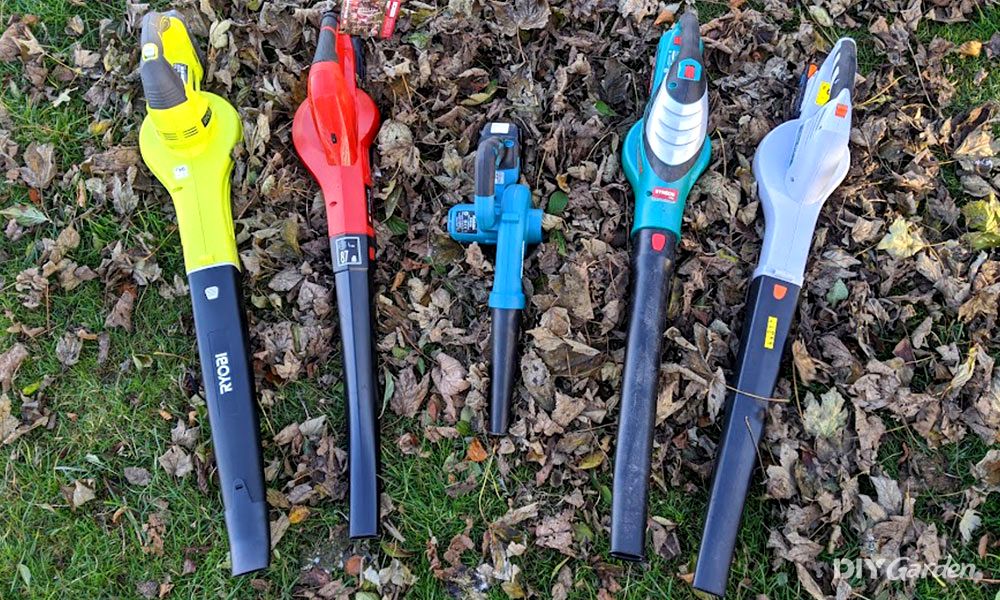
Is your garden or driveway covered in fallen leaves? Perhaps they’re wet, soggy and stuck to the ground too?! This is a problem we deal with extensively each year, as we run a farm up in Scotland. Slippery walkways are a real issue, so I know first-hand only the very best cordless leaf blowers will do. We tested some of the UK’s most popular models, to help ourselves, and you, deal with this problem effectively. Our top recommendation is the ALB 36 LI Cordless Leaf Blower. Read on to discover why we scored it so highly, and how we went about our testing.
-
Best overall - Bosch ALB 36 LI Cordless Leaf Blower
-
Best value leaf blower - Ryobi OBL1820S ONE+ Cordless Blower
-
Best for smaller gardens - VonHaus Cordless Leaf Blower
-
Best battery life on a budget - Einhell GE-CL Cordless Leaf Blower
-
Best lightweight blower - WORX WG543E.9 LEAFJET Cordless Leaf Blower
Cordless Leaf Blower Reviews
1. Bosch ALB 36 LI Cordless Leaf Blower
Best overall
- Multiple blow speeds to choose from makes the blower more versatile
- Its maximum blow speed of 250 km/h is higher than most of its competitors. This allows you to get the job done significantly faster
- A 2.0 Ah battery gives you 20 minutes of blow time - that's double the time of many other cordless leaf blower batteries
- Powerful enough to move both dry and wet leaves (unless the wet leaves are caught in long grass)
- A quiet machine - it won’t annoy your neighbours!
- The power significantly drops once the battery level is down to one bar (which is why it only gives you 20 minutes of blow time, rather than the 35 minutes that Bosch promises)
- Priced higher than other similar models
- Run Time
- 20 mins
- Blower Speed
- 250km/h
- Weight
- 1.9kg
- Noise
- 90dB
- Battery Included?
- Yes
- Assembly Ease
- 5
- Design
- 5
- Performance
- 4
- Ease of Use
- 5
- Power
- 5
- Safety
- 5
- Value for Money
- 5
A brand that most people already know and love, Bosch produces a wide range of home appliances and garden tools. I’m already familiar with the brand’s consistency when it comes to unique design and high-end performance. As a result, I was excited to see what their ALB 36 LI Cordless Leaf Blower brought to the table – and the many mature trees on my farm gave me plenty of opportunities to test it out.
It takes less than a minute to assemble this leaf blower. All you need to do is click the nozzle into place and then slide the battery in (remember to charge it first!).
Straight away you can tell this leaf blower is a Bosch product, with its trademark colour scheme and stylish finish. The brand has a reputation for being professional and high-end, and this leaf blower certainly looks the part. It may seem simple, but the design is clever. Both the power and speed are controlled by a single dial wheel, and its detachable nozzle makes storage easy.
After using the leaf blower to clear my lawn of dry leaves, I was even more impressed – it took far less time than I had anticipated. I then moved on to wet leaves. On my driveway, this leaf blower handled these just as easy as the dry ones; however, it struggled to shift wet leaves that had gotten tangled in long grass. It still got the job done, but it took a little longer.
In terms of power, this Bosch leaf blower sits above much of its competitors. With a blow-speed range of 170 – 250 km/h, it’s the most powerful of all the cordless leaf blowers I tested. Its 2.0 Ah battery offered the longest blow time too.
20 minutes may not seem like much if you have a large garden, but that’s double what you’d get from some other brands. Even better, this was the quietest of all the leaf blowers I tested – it’s ideal for those of you with nearby neighbours, sleeping babies, or just a sensitivity to loud noise!
As you can see, there are quite a few features that set this leaf blower above the rest, which is why the higher price tag is to be expected. If you have a small garden and won’t be using your leaf blower much, then you could probably get away with a cheaper budget model.
However, this is the best cordless leaf blower if you have a medium or large garden, or even a small garden, that requires regular use of a leaf blower. The Bosch leaf blower will get things done significantly faster than the rest, making it worth the extra initial investment.
Did you find this review helpful?
2. Ryobi OBL1820S ONE+ Cordless Blower[ SAVE 4% ]
Best value leaf blower
- A high blow speed of 241 km/h makes this a powerful cordless tool
- Great for blowing both dry and wet leaves, even when they’re caught in long grass
- The narrow nozzle gives you more control over the tool’s blowing action
- A relatively quiet machine that won’t disturb your neighbours (too much!)
- Priced very fairly for how effectively it performs
- Only has one speed setting, making the blower less versatile
- Needs a relatively large battery to achieve decent run time, which you may not own even if you already have other Ryobi ONE+ tools
- Run Time
- 8 mins
- Blower Speed
- 245km/h
- Weight
- 1.6kg
- Noise
- 92.5dB
- Battery Included?
- No
- Assembly Ease
- 5
- Design
- 5
- Performance
- 5
- Ease of Use
- 5
- Power
- 4
- Safety
- 5
- Value for Money
- 5
When it comes to power tools, Ryobi is a go-to brand for many. They’ve built their reputation on being innovative and reliable, whilst still producing products that are more affordable than many alternatives. I found this to be the case with the other Ryobi tools that I recently tested and reviewed, so I expected the ONE+ Cordless Blower to be just as impressive.
Although this leaf blower was primarily designed for hard surface sweeping, it certainly looked more than capable of tackling garden debris and blowing leaves too.
If you already own a few Ryobi tools, this leaf blower will fit right in with your collection. It only takes a minute to assemble and it sports the brand’s signature green and black colour palette – something you’ll either love or hate. Either way, looks aren’t important when it comes to leaf blowers; you want a product that has been thoughtfully designed and made, and that’s exactly what this one offers. This leaf blower has a simple design – it boasts a long, narrow nozzle and a single button to turn the machine on and off.
Some may be put off by the fact that this leaf blower only offers one air speed.
Many other machines, such as the Bosch and the Einhell, give you multiple speeds to choose from. However, this didn’t impact performance in a negative way – this cordless blower has a 241km/h air speed that is enough to shift both dry and wet leaves, even from long grass, which many of the other leaf blowers struggled with.
This leaf blower was able to quickly and easily clear leaves from my driveway too, without sending stones flying through the air. I can easily see how multi-functional this tool could be as well; it would be extremely useful in the summer after strimming or scarifying. It’s powerful enough to quickly clear away all of that debris, saving you from having to rake or mow.
Even better, at just 1.6 kg, the Ryobi ONE+ Cordless Blower is light enough to be used with just one hand. Its narrow nozzle gives you more control compared to more commonly-found wider nozzles – you’ll end up with a much neater leaf pile by the time you’re done.
The only thing that put me off was it’s run time. To be fair, Ryobi recommends using a 4.0 Ah or a 5.0 Ah battery with this blower. Unfortunately, I didn’t have either, so I ended up using a 2.0 Ah, which gave me a continuous blow time of just 8 minutes. There was still some life left in the battery after the initial 8 minutes (the LED indicator showed one bar), but, for some reason, each time I pressed the button, the blower would burst into life for two seconds, before cutting out.
Compared to the other leaf blowers I tested, this one sits at a mid-range price. However, considering that it was powerful enough to cope with both dry and wet leaves, which the other blowers weren’t really able to do, I would say it’s one of the best cordless leaf blowers in terms of value for money.
In my opinion, this leaf blower is powerful enough to tackle both small and large gardens, so long as you use a battery size that’s suitable for the size of garden you’re clearing. This may require more of an initial investment, but don’t forget that you can use the ONE+ batteries interchangeably across different Ryobi products.
In return, you’ll be getting a versatile garden tool that you’ll be able to use for various tasks around your garden throughout the year, rather than solely for leaf blowing in the autumn.
Did you find this review helpful?
3. VonHaus Cordless Leaf Blower[ SAVE 9% ]
Best for smaller gardens
- Works well for blowing dry leaves
- Light enough (1.85 kg) to be used with one hand
- The affordable price makes it a good buy for small gardens/occasional use
- Simple to use with just one on/off switch - intuitive and very straight forward
- A single blow speed makes this blower less versatile than others that offer multiple speed settings
- The 209 km/h blow speed isn’t powerful enough to move wet and heavy leaves
- Quite a loud machine - nearby neighbours will likely hear it
- The 1.5 Ah battery that came with this blower only provided a continuous runtime of 9-10 minutes
- Not efficient if you need to blow wet or heavy leaves
- Run Time
- 10 mins
- Blower Speed
- 209km/h
- Weight
- 1.85kg
- Noise
- 99 dB
- Battery Included?
- Yes
- Assembly Ease
- 5
- Design
- 4
- Performance
- 4
- Ease of Use
- 5
- Power
- 4
- Safety
- 4
- Value for Money
- 5
VonHaus is a popular brand, especially among those who need new power tools or machinery but don’t want to spend a fortune. Their G-Series Cordless Leaf Blower fits this criteria – it’s much more affordable than many of the others on the market, but how does it compare when it comes to performance?
Let’s start with assembly, which is something that only took about 30 seconds. Even if you’ve never used a leaf blower before, this one is easy to put together – you likely won’t even need the instructions.
In terms of design, this leaf blower isn’t as sleek or modern as some of the others out there (such as the Einhell model on this page). However, I appreciated its simplicity. It has an easily-accessible switch that turns the machine on and off, and just a single blow speed.
At 209 km/h, the blowing power works well on dry leaves, but it isn’t quite as capable on wet/heavy leaves. Although, to be fair, most of the blowers that I tested struggled to shift wet leaves.
Even though I wouldn’t turn to the VonHaus if I needed to move large quantities of heavy leaves, I’d still say it actually did a better overall job than some of the higher-end and more powerful models.
At 1.85 kg, this is a very lightweight leaf blower. Using two hands gives you more control, but the option of going one-handed means that you’ll be able to access hard-to-reach spots around your garden. The LED indicators on the battery are also handy, especially if you have several areas to clear.
Speaking of the battery, I used a 1.5 Ah 20 V battery with this leaf blower, and it gave me a total run time of just under 10 minutes. This is similar to the Ryobi blower on this page, even though the Ryobi made use of a larger 2.0 Ah battery.
Unfortunately, I do have to say that even though this leaf blower isn’t as powerful as some of the others, it’s definitely noisier. This was the loudest blower that I tested, so it’s probably not a good option for those of you with nearby neighbours. It shouldn’t cause an issue if you’re only using it occasionally, but it’s something worth thinking about if you plan on using your blower for various garden tasks throughout the year.
When it comes to price, this blower is very reasonable. The low price reflects the tool’s simplicity – you may only be getting one blow speed, but if this is all you need, then why pay more for a machine with unnecessary settings?
It should be noted though, that if I needed to clear a large garden this wouldn’t be my tool of choice. Even if I had a larger battery for it, it’s not quite powerful enough to cope with big quantities of leaves.
However, I would say this is one of the best cordless leaf blowers for smaller gardens. If you have a small garden and you’re able to wait until your leaves are dry before attempting to clear them, then the VonHaus G-Series Cordless Leaf Blower should do everything that you need it to.
Did you find this review helpful?
4. Einhell GE-CL Cordless Leaf Blower[ SAVE 13% ]
Best battery life on a budget
- Six blow speeds to choose from makes this blower extremely versatile
- Very lightweight at 1.73 kg
- Great for blowing dry leaves, as well as wet leaves and garden debris from hard surfaces
- Its affordable price makes this a worthy tool even just for occasional use
- A 2.0 Ah battery gives you an impressive 15 minutes of continuous runtime (the same sized battery with some other models offers just half this)
- The positioning of the trigger means that it's difficult to carry the blower by its handle without turning the machine on
- The maximum blow speed of 210 km/h isn’t powerful enough to shift wet leaves from grass
- The trigger needs to be constantly pressed while the machine is in use, which slightly limits your movements compared to blowers that have a switch instead of a trigger
- Run Time
- 15 mins
- Blower Speed
- 210km/h
- Weight
- 1.73kg
- Noise
- 79.5dB
- Battery Included?
- Yes
- Assembly Ease
- 3
- Design
- 3
- Performance
- 4
- Ease of Use
- 4
- Power
- 4
- Safety
- 4
- Value for Money
- 5
Loved for their powerful yet budget-friendly home and garden tools, Einhell is a German company that has now made a name for itself all over the world. I’m pretty familiar with the brand, so was excited to put their Einhell GE-CL Cordless Leaf Blower to work.
Unlike some of the other leaf blowers that I tested, which were designed solely for leaves, this one was also created to clear dirt and dust from hard surfaces.
Most leaf blowers require minimal assembly – once you’ve dealt with any frustrating packaging, you can have them up and running in under a minute. Unfortunately, this wasn’t the case with the Einhell. Sliding the nozzle onto the main unit wasn’t an easy task. I gave up once my arms started to ache, so even though the leaf blower was assembled enough to be used, the nozzle never properly clicked into place.
In terms of aesthetics, Einhell’s blower is definitely a sleek and modern tool – in my opinion, it’s one of the best-looking blowers that I tested. Its design incorporates two controls: a trigger for powering up the machine, and a dial wheel that allows you to choose between six different blow speeds.
Unfortunately, the positioning of the trigger was a little annoying – if you try holding the blower by its handle and carrying it around the garden, you’ll likely end up accidentally hitting the trigger several times. Although not a huge deal, this did end up wasting a fair bit of precious battery.
In terms of performance, this leaf blower excels when dealing with dry leaves. It was also able to shift heavier and wetter garden debris from my driveway. However, it struggled with damp leaves on grass, barely moving these at all.
Still, I appreciated how lightweight (1.73 kg) and manoeuvrable this tool was. It could easily be used with one hand, although I tended to keep both hands on the machine to give me better control.
When it comes to power, this blower offers a maximum blow speed of 210 km/h. This made it one of the least powerful blowers that I tested, which possibly explains its ineffectiveness when used on damp leaves around my lawn. However, considering that I was only using a 2.0 Ah battery, the 15 minute runtime was pretty impressive (and that was keeping it on its highest setting too).
Einhell’s power tools are generally quite affordable, and this blower is no exception. It’s priced much lower than many of its competitors, especially considering a battery and charger come included.
In my opinion, its price is very fair. Yes, you could pay more for a more powerful, heavier-duty blower, but this would be a waste of money if you only need to clear a light scattering of leaves and debris from a small garden. Comparing run time and great value, it ones of the best leaf blowers on a budget.
Overall, it wouldn’t be my top choice for medium or large gardens, but, for smaller spaces, Einhell’s Cordless Blower is really all you’ll need.
Did you find this review helpful?
5. WORX WG543E.9 LEAFJET Cordless Leaf Blower
Best lightweight blower
- Light enough to be used with one hand
- Strikes a good balance of power and manageability - slimline but still strong enough to clear larger lawns
- Achieves 10 minutes run time with a 2 Ah battery
- Compatible with all 20 V batteries from the Worx Power Share range
- Reasonably quiet at 92.6 dB
- Doesn’t come with a battery or charger included
- Doesn’t have sufficient power to move wet leaves on wet ground
- Getting the battery out of the unit to charge can be a little fiddly
- Run Time
- 20 minutes
- Blower Speed
- 209km/h
- Weight
- 1.55kg
- Noise
- 92.6dB
- Battery Included?
- No
- Assembly Ease
- 3.5
- Design
- 4
- Performance
- 4
- Ease of Use
- 5
- Power
- 3.5
- Safety
- 5
- Value for Money
- 5
The WORX WG543E.9 LEAFJET Cordless Leaf Blower is a particularly lightweight and manageable model. Measuring just 77 x 17 x 12 cm and weighing 1.05 kg (without the battery) this is one of the lightest and smallest leaf blowers featured here.
Yet, despite its petite specifications, this leaf blower still strikes a good balance between power and manageability. Yes, it’s lightweight and slimline, but it’s not weak as a result. It has a maximum air speed of 209 km/h and is capable of creating a storm amongst dry leaves as well as shifting leaves from awkward spaces.
Thanks to the design of the blower head, it’s possible to adjust the amount of air volume that is produced by this leaf blower. This means it works equally as well on large open spaces as it does in smaller areas. There are two speed settings available.
It’s sold as a bare unit and is compatible with 20 V Worx Power Share batteries. Therefore, if you have any other Worx tools, you won’t need to buy a battery or charger for this leaf blower. When used with a 2 Ah battery, it will run for approximately 10 minutes.
In terms of volume, this leaf blower emits 92.6 dB. It therefore sits at the quieter end of the market, though it’s by no means the quietest leaf blower featured here.
Overall, this is a reliable leaf blower with its light build, ease of use, and sci-fi appearance as its main selling points.
Did you find this review helpful?
Product Testers
You need a leaf blower to perfectly suit your needs. To help you find the one for you, we conducted a thorough investigation of the some of the top cordless leaf blowers available, so you will have no trouble finding a model that works for you. When testing the products, we considered many important factors, including:
- Assembly Ease: Cordless leaf blowers don’t tend to have many parts to put together. So, as a test of assembly ease, I timed how long this took and how easily the various parts fitted together. I also checked out any instructions that were given and assessed them for clarity and descriptiveness. Leaf blowers that we could construct in less than a minute with ease were given the highest ratings.
- Design & Performance: Cordless leaf blowers need to have sufficiently long battery time for them to be useful for different garden sizes. So, we tested the leaf blowers out in different-sized gardens, from small to large, and timed the battery life. Blowers with a battery life of 20 minutes were given the best rating, as this was enough time to complete most jobs. Leaf blowers with handy features like multiple speed settings were given particularly high marks as these helped to prolong the product’s battery life and allowed you to apply more power for more tricky debris like wet leaves – the best range was from around 170 – 250 km/h. We also assessed whether the blowers could move both dry and wet leaves, as this was the ultimate test of its performance. Blowers that couldn’t move wetter leaves were rated down.
- Ease of Use: When assessing ease of use, we considered whether each leaf blower had an ergonomic design, was lightweight enough to use for prolonged periods, and whether it had handy features like instant start. Models that had a shoulder strap, ergonomic padded handle, and lightweight design of 2 – 2.5 kg were given the best ratings. We also considered how easy each product was to store. Those with a detachable nozzle could be stored in smaller spaces, making them more suitable for the average household. These received the best star rating.
- Power: Airflow speed is one of the most important features when it comes to power. We marked any leaf blowers down that had less than 250 km/h airflow speed, as this isn’t sufficient for wetter leaves and detritus, reducing the versatility of the blower. Blowers that had the right balance of power and noise levels (of 90 dB or lower) were given the highest marks, as these were less likely to cause a headache to users and their neighbours!
- Safety: To test safety, we checked for safety features like a safety interlock switch, lock-on button, nozzle guards, and anti-vibration system. The models that combined most of these features were given the highest ratings.
- Value for Money: We assessed each blower’s performance, battery life, build quality and durability alongside their price. We also took into account factors such as brand reputation, battery compatibility, and included accessories. Those which offered the best value for money were given the highest ratings.
Compare Product Features
Use the dropdown to sort the table by the feature you want to see.
Bosch ALB 36 LI Cordless Leaf Blower
- 4.9
- 20 mins
- 250km/h
- 1.9kg
- 90dB
- Yes
Ryobi OBL1820S ONE+ Cordless Blower
- 4.9
- 8 mins
- 245km/h
- 1.6kg
- 92.5dB
- No
VonHaus Cordless Leaf Blower
- 4.4
- 10 mins
- 209km/h
- 1.85kg
- 99 dB
- Yes
Einhell GE-CL Cordless Leaf Blower
- 3.9
- 15 mins
- 210km/h
- 1.73kg
- 79.5dB
- Yes
WORX WG543E.9 LEAFJET Cordless Leaf Blower
- 4.3
- 20 minutes
- 209km/h
- 1.55kg
- 92.6dB
- No
How to Choose The Best Cordless Leaf Blower
Turns out, the best cordless leaf blowers come in handy for loads of different jobs – not just clearing leaves (although they’re great at that too!). They’re a useful tool to have in the shed, and the fact that they don’t have any cables makes them easy to grab at any time.
Alongside shifting leaves, battery powered leaf blowers can also be used for jobs like clearing out guttering, drying the car post-wash, clearing snow and levelling-out gravel. Plus, if you have a suitable attachment, you can even use a leaf blower to inflate blow-up beds and paddling pools.
Choosing the best leaf blower will depend on what you want to use it for and what tools you already own. The following information should help you work out what to look out for (as well as what to avoid!).
The Benefits of Using a Cordless Leaf Blower
Thanks to their wire-free nature, cordless leaf blowers can easily be pulled out the shed for any job, big or small – and they have more uses than you might expect…! Not only are there no cords to trip you up, and no heavy petrol motor to carry, but the best leaf blowers can be used for all of the following tasks:
- Clearing up leaves (ok, so maybe this one is obvious)
- Cleaning lawn equipment by blowing grass clippings etc. off the blades
- Clearing out guttering and stopping blockages from occurring
- Clearing light snow quickly
- Drying your car after washing
- Drying patio furniture after washing so it can be used straight away
- Levelling out gravel
- Clearing a garage of sawdust
- Clearing dust and debris out of a work van
- Clearing spider webs from your shed and garage
- Blowing grass edge clippings back onto the border
- Inflating a paddling pool/blow-up bed (with the right attachment)
As you can see, leaf blowers are not just a one-trick pony! Once you own a leaf blower, you’ll probably find yourself using it for a lot of jobs that you wouldn’t have expected.
Finding Cordless Leaf Blowers with a Good Run Time
Run time is one of the most important aspects to consider when buying a cordless leaf blower. Rechargeable lithium-ion batteries can take 1 – 2 hours to recharge, so you’ll probably want to try to get all your leaf blowing done in one go.
Larger batteries will give you a longer run time, but how long exactly will depend on how quickly the leaf blower uses power. This can vary between different battery powered leaf blowers. If the leaf blower has several power settings, you can be more conservative with battery power and get it to last longer.
Cordless leaf blowers with one speed setting (particularly if the setting blasts out air at over 175 km/h) will likely have a much shorter run time than a less powerful model when used with the same battery.
To give a general indication (although this is very broadly speaking) a 2 Ah battery may last for around 10 – 15 minutes, whilst a 5 Ah battery could last for approximately 45 minutes.
Larger batteries are heavier and will make the whole leaf blower weigh more; this is something to bear in mind if you’re particularly interested in having as light a machine as possible.
One way to extend the running time of the leaf blower, without using huge and heavy batteries, is to have more than one battery. This way you can have a charged battery on standby, to swap out when the first one runs empty.
Some of the best cordless leaf blowers will have batteries that are interchangeable with other tools from the same brand. Many tool companies, such as Bosch, DEWALT and Ryobi use the same battery type for a range of tools – you may find you already have a compatible battery in your garage.
Another good tip is to stop using the leaf blower before the battery runs out entirely. Lithium-ion batteries are not meant to run down to zero charge. Leaving 10% charge in place means it’ll stay healthy and take less time to charge up.
READ NEXT: The Best Petrol Leaf Blowers
The Importance of Air Flow Speed
The speed of the air flow varies according to the design of the leaf blower and how well it uses its power. It’s not necessarily as simple as thinking ‘the more powerful the motor, the more powerful the machine’.
Look at the air flow speed cited by the manufacturer in the leaf blower’s specifications. Also, consider what jobs you will want to use the leaf blower for.
If you only want a leaf blower for blowing leaves, and want to be able to shift wet leaves from grass, you should look for a maximum air flow speed of around 250 km/h. This will be too powerful for clearing dust/debris from a workshop (it’ll go everywhere!) so make sure there are variable speed settings if you want to use the blower for different jobs.
A leaf blower with an air flow speed of approximately 175 km/h will be powerful enough to remove most leaves from hard surfaces, although it may occasionally struggle with very wet leaves. Cordless leaf blowers with this level of airflow are normally more appropriate for clearing dust, dirt and debris from interior spaces. They’ll also work better for removing leaves from gravel without making the gravel go everywhere.
Generally speaking, having a choice of air speeds makes leaf blowers more versatile; however, if you’re only interested in a very powerful leaf blower, changeable speeds won’t matter as much.
READ NEXT: How to Dispose of Leaves After Blowing
Choosing the Right Weight
Naturally, using a lightweight leaf blower is less tiring than using a heavy one. Cordless leaf blowers can range from around 1.3 kg – 3 kg; whereas petrol leaf blowers will generally be a lot heavier.
The size of the battery will make a difference to the weight of the leaf blower; there may be a difference of approximately 0.5 kg between the weight of a 2.0 Ah battery and a 5.0 Ah battery.
Given that a bigger battery will have a longer run time, you could keep the weight down by using several smaller batteries one after the other. Of course, this will cost more if you need to purchase extra batteries separately.
Smaller, lightweight cordless leaf blowers are also more suitable for people with arthritis or reduced mobility. Purchasing a strap for the leaf blower can also be useful to distribute the weight better.
Brand name tools often offer straps to fit their leaf blowers so it’s worth finding out if there’s a compatible strap available before making your purchase if this is of interest to you.
READ NEXT: The Best Ways to Pick Up Leaves Quickly
How To Use a Leaf Blower
This might seem obvious – you pull the trigger and chase leaves across the lawn, right?
Well, yes – that is the basic idea! However, there are a few tricks that’ll help you make less mess and cut down on gardening time:
Appropriate Clothing
First up, wear some thick gloves because even the most compact cordless leaf blowers tend to vibrate and this can make your hands feel sore and tingly.
Wearing goggles and ear defenders is also a good idea; the air blasting from a leaf blower can be in excess of 250 km/h, that’s enough to send stones flying and create a fair amount of noise.
READ NEXT: The Best Leaf Collectors
Weather Conditions
- Is it windy? It’s best to move leaf fall on still days or when the wind is blowing in the right direction to help your efforts. Leaf blowing against the wind is pointless.
- Is it raining or has it recently rained? Wet leaves are harder to move than dry ones. You can test how difficult it’ll be by using your cordless blower on a pile of wet and soggy leaves. If they won’t move easily, wait for a dryer day.
- Is it a still and sunny day? These are optimum conditions – choose a spot where you can gather your leaves and place a piece of tarp down/garden waste bags.
Technique and Tactics
- If you have a spare, compatible battery, stick in on charge whilst using the leaf blower. If you do need to change batteries, you won’t have to waste any time waiting around.
- Blow leaves in one set direction or you’ll end up moving them all around your garden.
- The best way to position your leaf blower is at your side with the nozzle pointing at the ground. You want to chase the leaves firmly to the waste pile with slow side to side movements as you step forward.
- Put a piece of tarp down on the ground – you can blow the leaves onto this tarp and then bundle it up at the end.
Bear in mind: you’ll likely have to accept that the leaf blowers won’t shift every single leaf, you will need to rake up the stragglers if they bother you.
- Once you have a leaf pile, don’t bin it – compost it! Leaves make great compost. Gardeners call it ‘black gold’ and it’s perfect for topping up pots and borders. Pop your leaves into bags and let them decompose over a year for crumbly super-charged compost.
- If you’re using a battery powered leaf blower to shift dust, use the same side-to-side technique, but on the lowest blow setting. Otherwise, it’ll create a choking dust storm. You may want to spray areas down with a little water to stop clouds of dust forming.
READ NEXT: Should Fallen Leaves Be Left in Flower Beds?
Cordless Leaf Blower FAQs
Unless you’re interested in doing some industrial-level leaf clearing, a battery-powered leaf blower should be sufficient. Petrol leaf blowers are much louder, emit fumes and are heavier. Therefore, you’ll probably find it more practical to opt for one of the best cordless leaf blowers reviewed on this page – batteries last for approximately 30 minutes which is enough time to get most jobs done. Some of the most powerful battery-powered leaf blowers can push air out at 250 km/h, which is forceful enough to move wet leaves from grass.
The problem with being chained to a cord is that you are restricted in your movements around the garden. Most of the time you’ll have to use an extension cable. Even with an extension cable it’s possible to find yourself running out of tether. Cordless leaf blowers offers much more flexibility – you’ll never find yourself chasing a leaf and then being yanked back by the cable!
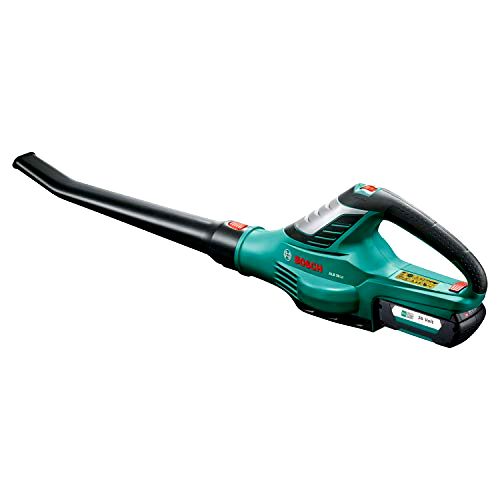
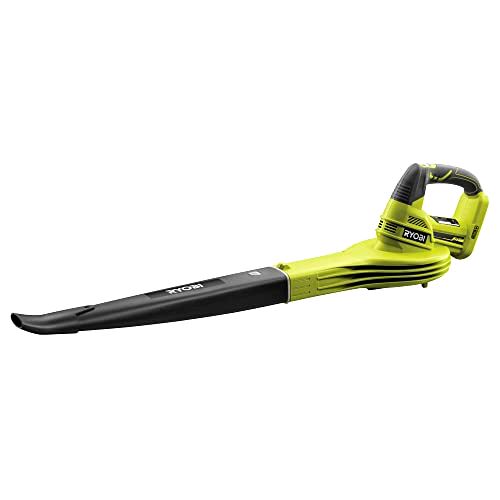
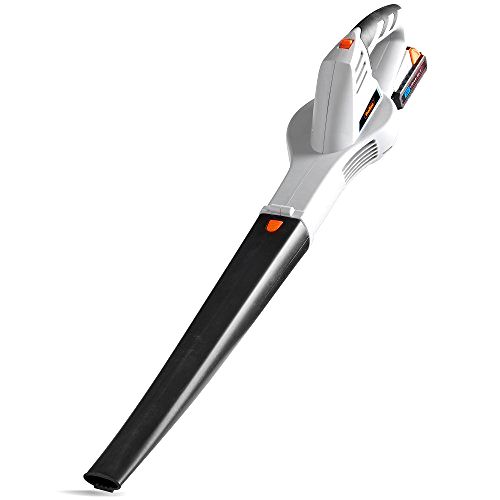
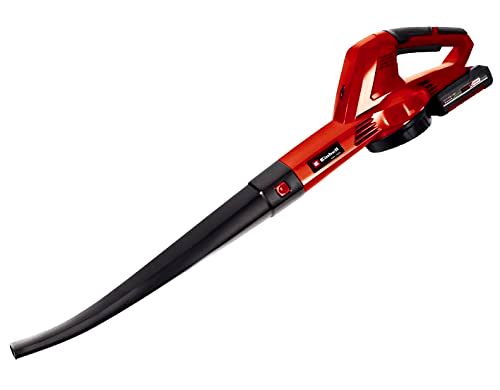
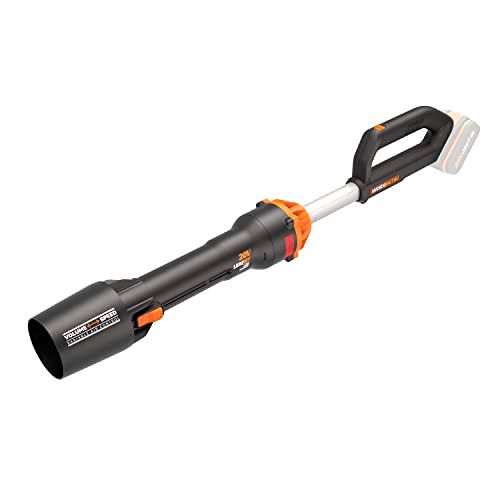
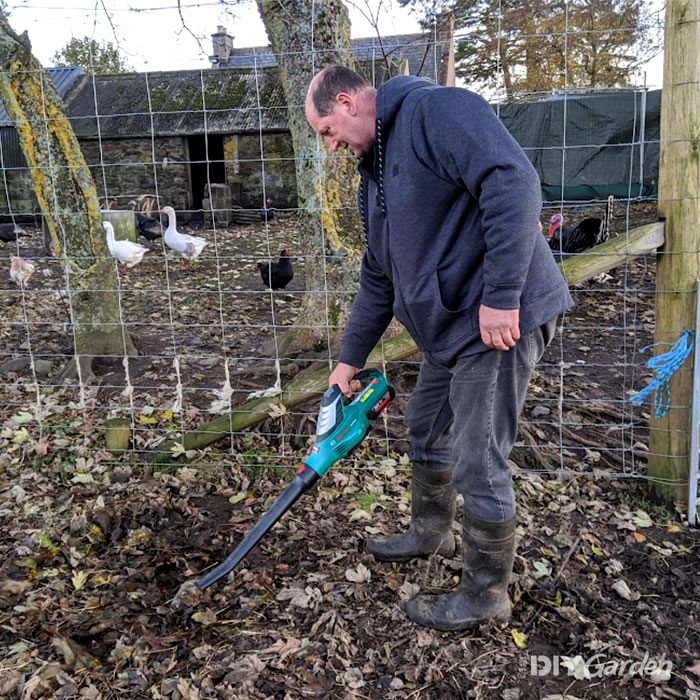
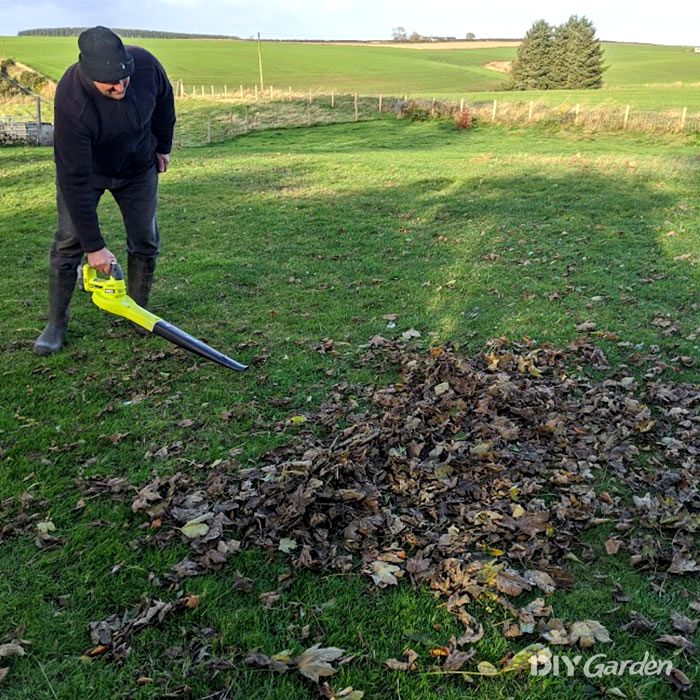
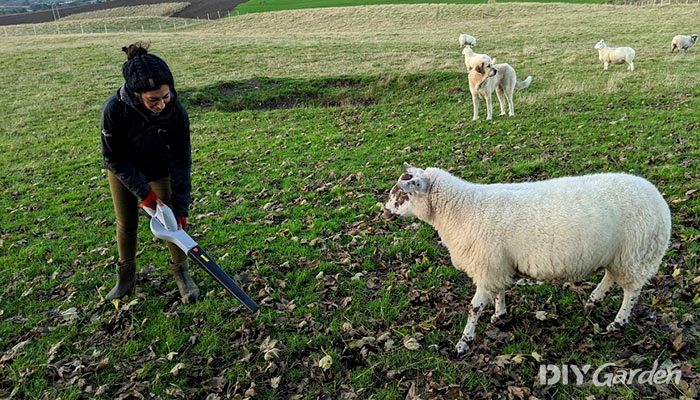
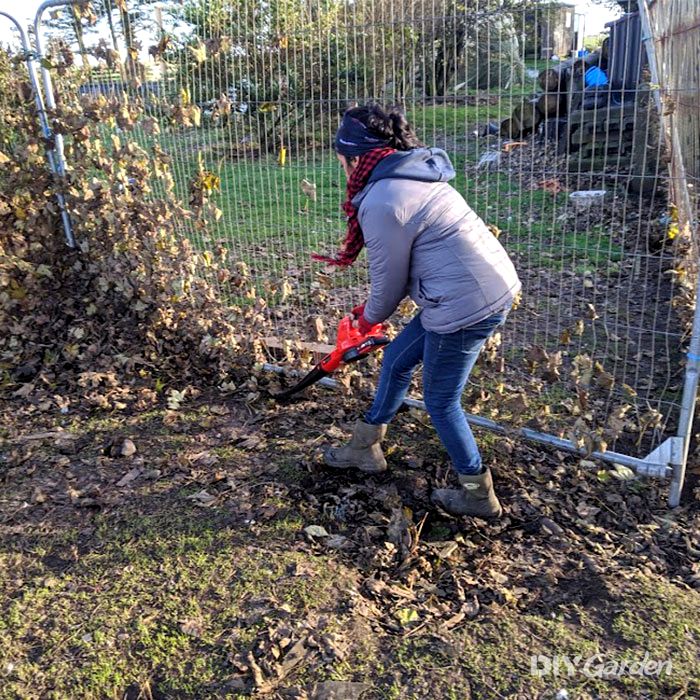

Share